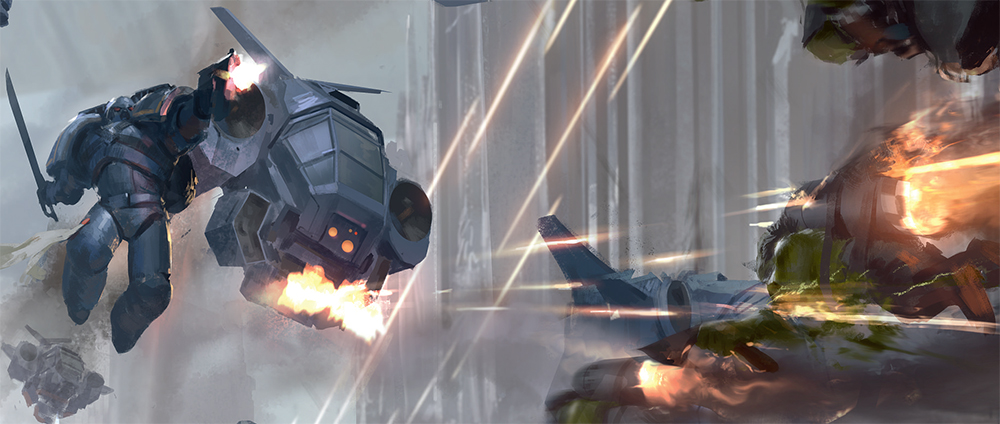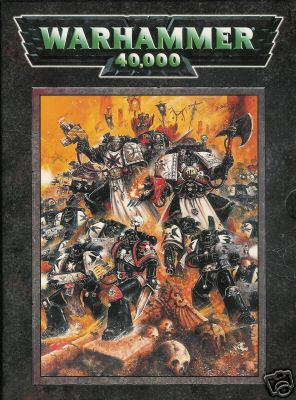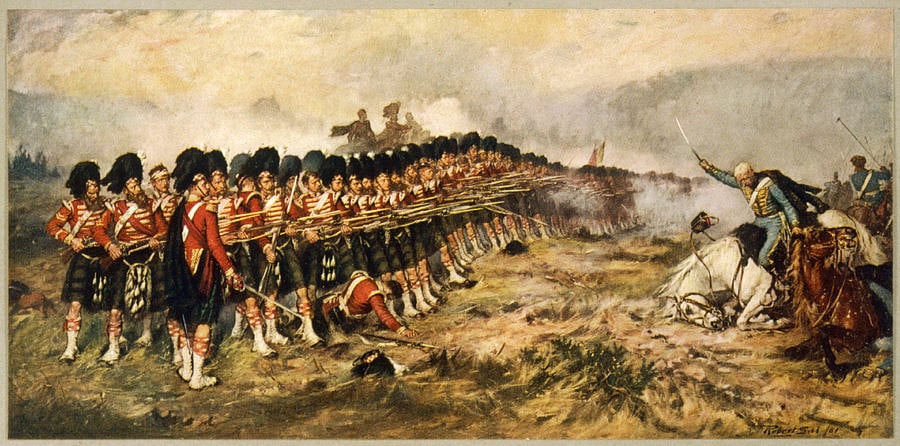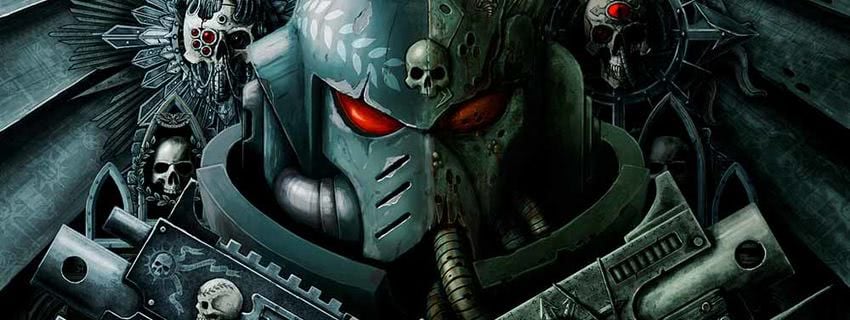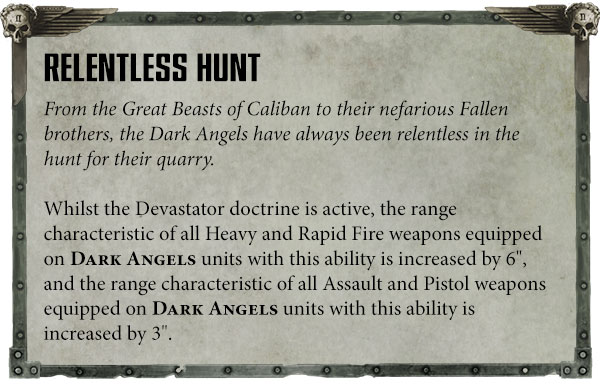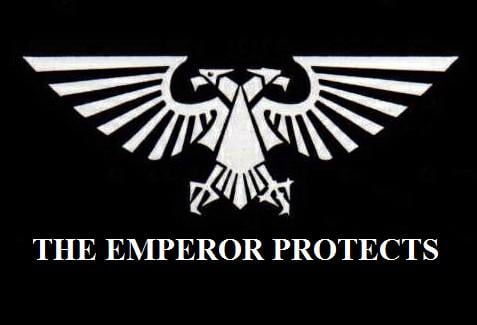Warhammer 40K: Long Ranges Are Breaking The Game
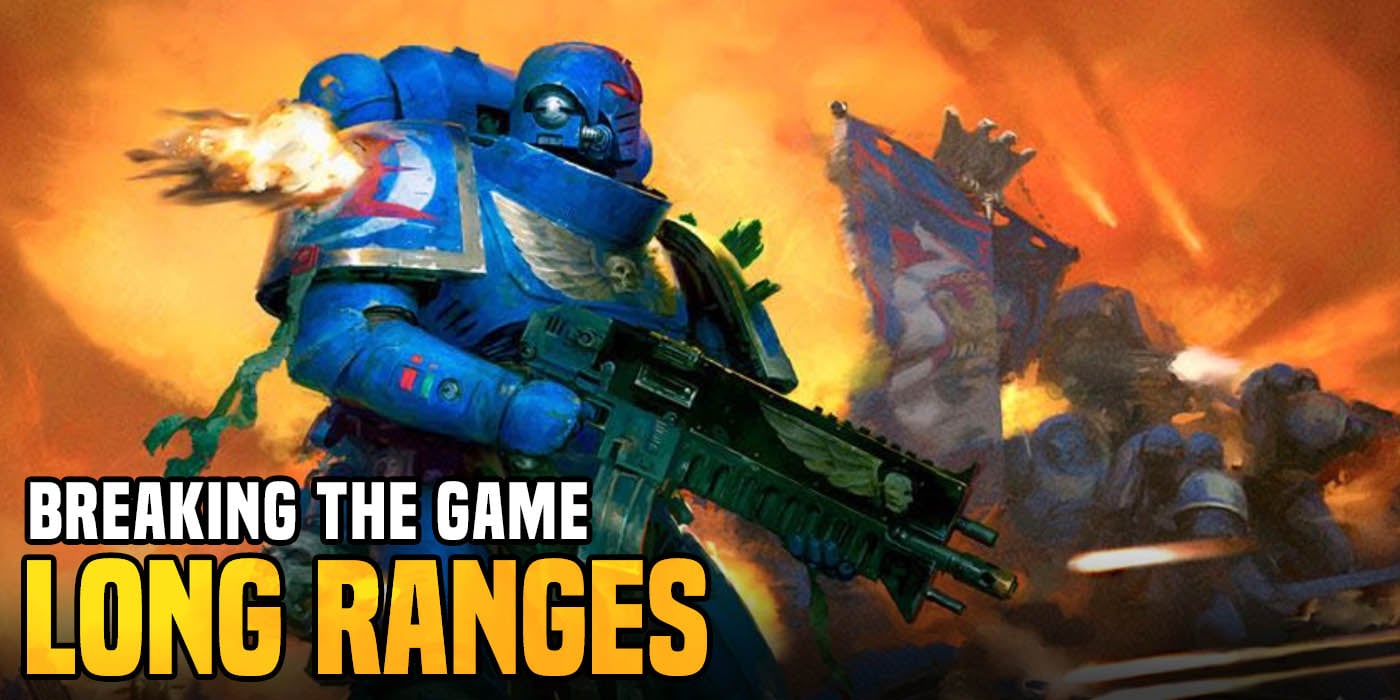

Let’s talk about why longer weapon ranges are bad for the game.
Warhammer 40,000, like most wargames, is a complex beast. It’s got a lot of moving parts and on your turn you can do a lot of things, move, shoot, fight in combat, and throw mind bullets at enemies. In theory, all of these should be actions you can take to help win a game, and the competing advantages they offer should force you to make interesting choices. One aspect of the game where this breaks down is with shooting, where a trend towards increasing the ranges of weapons, and the threat range of units, has removed choices and broken the game. Let’s take a look.
Move vs. Shoot
Fire and maneuver is a key concept of modern war, and has in some form or another, played in part in human conflict since the first time a man ran up and threw a rock at another man. The conflict between moving to better utilize a weapon, and staying still to better fire it has dictated how many battles have gone. In real life I can’t think of any battle where an army has won without moving. I,f however, I told you that was possible in 40K you’d like say “yeah, I’ve played in that game”. That’s not a great sign for the game. Moving and shooting should present you with choices in the game and right now they don’t.
In The Past
Past editions of 40K attempted to present you with the choice between moving and shooting. For several editions the average range of a gun was 24 inches or less. Those weapons that had longer range stood out and where generally heavy weapons. In addition most deployments made it so that it was next to impossible to start within 24 inches of the enemy. This tended to force some movement to even get units into range. The way weapons worked also played into this.
For most editions of the game a unit that moved could not fire heavy weapons (vehicles broke this rule, but still faced restrictions) this gave you a downside to moving. Rapid fire weapons also had an interesting dynamic. Like in 8th Edition they could double shots at half range, this gave you an incentive to move closer to the enemy. However if a unit with a rapid fire moved, it couldn’t shoot beyond half range. This game you the very real choice of either trying to move close to get more shots, but being unable to fire along the way, or staying still and getting less shots per turn. Two units with 24 inch range guns starting at 25 inches, faced a dilemma, one would have to move to get into range, but in doing so would allow the other to get the first shots off. These kinds of choices made for an interesting move vs shoot dynamic. Sadly that had broken down.
Longer Ranges Are More Realistic
I want to quickly acknowledge that longer ranges are more realistic. The abstract style of the game, and the needs of the rules, force weapons to have ridiculously short ranges. Based on the models one inch roughly equals one meter in game. This means that high tech weapons like bolters have a max range of about 24 meters, about half the range of a smoothbore musket. Even something like a Basilisk, with a 240 inch range that means it can hit anything on its table and the next couple of tables, has a range that is unrealistically short. If realism was the goal almost every gun, save some pistols and grenades, would just have unlimited range, however this would be horrible for the game, as we can see by looking at the extra ranges 8th has granted.
8th Makes The Game Have Longer Ranges
8th Edition did a few things that slowly eroded at the choices between moving and shooting. 8th started off by allowing heavy weapons to move and fire with only a minor penalty. Couple this with the fact that rapid fire weapons can move and still shoot normally, and you’ve removed most of the downsides to moving. Units can move and then fire at almost full effect (with a number of units and armies even ignoring any downsides). This removed an element of choice there which hurts the game. On the other hand it also encouraged units to move more, which while it removed the tactical choice, at least made games a little more dynamic.
If you combine this with the fact that half the missions allow units to start within 18 inches of the enemy, the fact that a ton of armies have ways of setting up even closer and that units move faster than before, and you’ve got a very deadly first turns. Often it’s easy to get your whole army in range and shooting right off the bat. No more choice between taking a few pots shots on turn one or spending a turn or two maneuvering into position to get full effect. While the increased mobility seems good, it’s really one of the major contributors to alpha strikes and loss of player choice.
Lately however 8th has backtracked a bit on this, both extending ranges and disincentivizing movement, with a net downside to the game. While several armies have gotten ways to extend their rangers, Space Marines are the worst offenders. Thanks to the Primaris the Space Marine army has gone from an army with a 24 inch range to an army with a 30 inch threat range, with access to many basic weapons with that range. Add in chapter powers such as the new Relentless Hunt or Long Range Marksmen and you can extend that even move.
Units with 30+ inch range rarely need to move to get into range. When you couple this with a host of good heavy weapons, and Bolter Drill, which makes you want to stay still you’ve got a bad combination where Marine units want to stay in place to get extra shots, and have the range to do this. While this gives them power, its breaks the game again and doesn’t make for interesting choices. Now it’s come to the point where moving is a downside, and often you have no reason to do it. Thus 8th has both extremes, too much movement and too much range, and both end up limiting the game and removing player choices.
Let us know if you think range is an issue, down in the comments!

